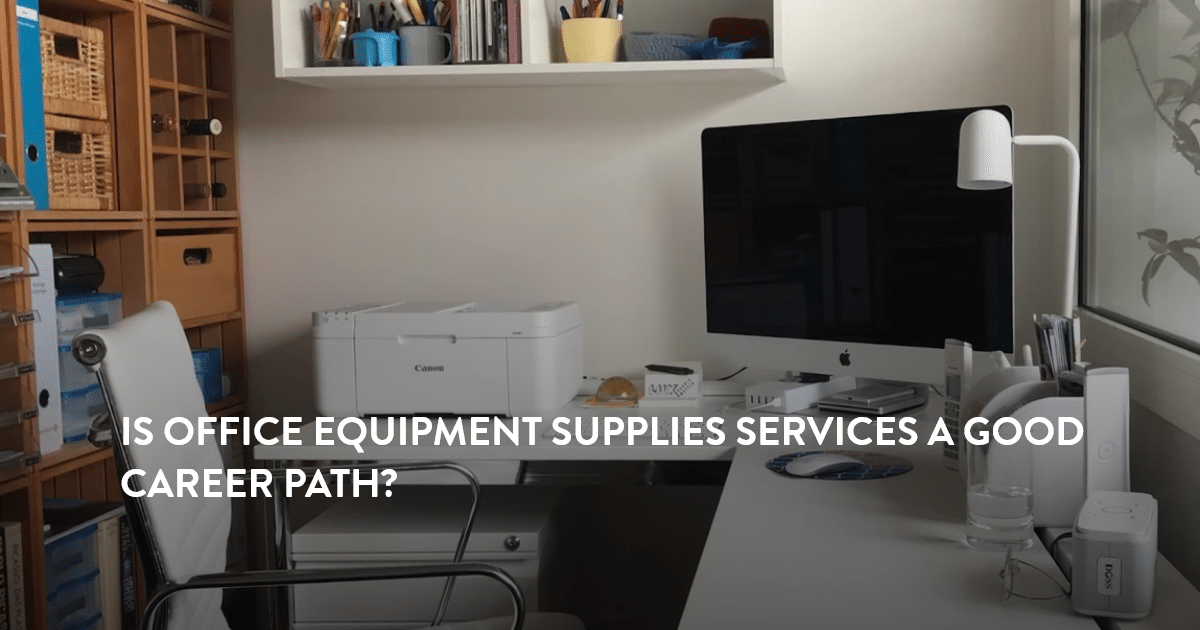- Glossary
- What Is Gross Monthly Income?
- What Is Management?
- What Is A Problem Statement?
- What Is Annual Net Income?
- What Is A Letter Of Transmittal?
- What Is Attrition?
- What Does White Collar Mean?
- What Does Blue Collar Mean?
- What Is Efficiency Vs Effectiveness?
- What Is A Dislocated Worker?
- What Is Human Resource (HR)?
- Thank You Letter Scholarships
- What Is Constructive Criticism?
- What Is A Quarter Life Crisis?
- What Is Imposter Syndrome?
- What Is Notes Payable?
- Types Of Communication
- Economic Demand
- Cost Benefit Analysis
- Collective Bargaining
- Key Performance Indicators
- What Is Gender Bias In A Job Description?
- What Is The Hidden Job Market?
- What Is The Difference Between A Job Vs. A Career?
- What Is A Prorated Salary?
- W9 Vs. 1099
- Double Declining Balance Method
- Divergent Vs Convergent Thinking
- Budgeting Process
- Types Of Intelligence
- What Is Bargaining Power?
- What Is Operating Capital?
- Difference Between Margin Vs Markup
- Participative Leadership
- Autocratic Leadership
- Authoratarian Leadership
- Situational Leadership
- Difference Between Generalist Vs Specialist
- Strategic Leadership
- Competitive Strategies
- Equity Vs Equality
- What Is Marginalization?
- Colleague Vs Coworker
- What Is The Glass Ceiling?
- What Are Guilty Pleasures?
- Emotion Wheel
- Nepotism In The Workplace
- Sustainable Competitive Advantage
- Organizational Development
- Communication Styles
- Contingent Workers
- Passive Vs Non Passive Income
- Choose A Career
- Formulas
- APR Formula
- Total Variable Cost Formula
- How to Calculate Probability
- How To Find A Percentile
- How To Calculate Weighted Average
- What Is The Sample Mean?
- Hot To Calculate Growth Rate
- Hot To Calculate Inflation Rate
- How To Calculate Marginal Utility
- How To Average Percentages
- Calculate Debt To Asset Ratio
- How To Calculate Percent Yield
- Fixed Cost Formula
- How To Calculate Interest
- How To Calculate Earnings Per Share
- How To Calculate Retained Earnings
- How To Calculate Adjusted Gross Income
- How To Calculate Consumer Price Index
- How To Calculate Cost Of Goods Sold
- How To Calculate Correlation
- How To Calculate Confidence Interval
- How To Calculate Consumer Surplus
- How To Calculate Debt To Income Ratio
- How To Calculate Depreciation
- How To Calculate Elasticity Of Demand
- How To Calculate Equity
- How To Calculate Full Time Equivalent
- How To Calculate Gross Profit Percentage
- How To Calculate Margin Of Error
- How To Calculate Opportunity Cost
- How To Calculate Operating Cash Flow
- How To Calculate Operating Income
- How To Calculate Odds
- How To Calculate Percent Change
- How To Calculate Z Score
- Cost Of Capital Formula
- How To Calculate Time And A Half
- Types Of Variables
Find a Job You Really Want In
There is a power dynamic in every relationship, negotiation, and interaction, even if it may not seem obvious or be of any consequence. In business, that power can be everything.
Power will always be an exchange, a give and take. Give something to the opposition to get something in return. That’s the beauty of negotiation.
Who has the power in the negotiation? It will vary from negotiation to negotiation. There are a number of factors that will determine how much bargaining power each party holds. Simple things like relevant knowledge can tip the scales one way or the other.
Buyers will always attempt to negotiate the best deal with the lowest prices. On the other side, sellers will always work to sell at the highest possible price.
Each side will do everything in their power to reach their desired outcome. Negotiation skills can only take you so far. Bargaining power can determine the outcome of the business negotiations.
What Is Bargaining Power?
Bargaining power is an ever-evolving measure of one party’s ability to influence another in negotiations. Which party has the most leverage? Which side has the upper hand? Who has more influence over the outcome of the deal?
The party with the higher bargaining power will have the ability to swing the negotiations in their favor. They will have the ability to negotiate a deal that is closer to their desired outcome.
There are many factors that can influence someone’s bargaining power. And, each party’s power is not concrete. There is an ebb and flow to it. It will vary from negotiation to negotiation as well as from moment to moment. The power can shift from one party to another at any time.
Bargaining can occur at any stage of the deal being struck, so having an understanding of the bargaining power of each side can go a long way. Buyer and seller can bargain on the price of a product or service, the perks and add-ons or bonuses included in the purchase, the schedule for a service to be completed, product or service modifications, and more.
Everything from money, authority, influence, information, time and more can have an effect on the bargaining power. Something as simple as more information can shift the power from one party to another in the blink of an eye.
Porter’s Five Forces of Industry Analysis
Using Porter’s Five Forces of Industry Analysis can help you to understand the current competitive positions. It is an effective tool in business.
Many will use this tool when identifying new products or services your company is looking to offer. It is also an effective tool to use when analyzing the market and business environment (SWOT analysis is also an effective tool to use here).
The Five Forces of Industry Analysis can also be used to help you understand the balance of power, and thus your own bargaining power, in a given negotiation.
It focuses on five vital sources that Porter believed affect business competition. These five forces are:
-
The bargaining power of suppliers
-
The bargaining power of buyers
-
Competitive rivalry
-
The threat of substitution
-
The threat of new entry
The Bargaining Power of Buyers
One of Porter’s Five Forces of Industry Analysis is The Bargaining Power of Buyers. This vital force refers to the bargaining power that customers, or consumers, can use against a business or retailer to negotiate for a better deal.
Whether they are attempting to lower prices, negotiating additional add-ons, pushing for higher quality products, demanding better customer service, etc., a win for the customer equals costs for the seller. The buyer’s bargaining power will play a role in each and every sale, contract, and negotiation.
The analysis of the bargaining power of customers, or consumers, is conducted by the seller. When assessing the buyer’s bargaining power, the company will need to consider how difficult it will be for the customers to lower prices or succeed in demanding more for the same price.
-
The number of buyers. Also referred to as buyer concentration, this refers to the ratio of buyers to sellers. If the number of buyers is smaller than the number of sellers, the buyer’s bargaining power will be stronger than that of the seller.
Of course, the same can be said of the opposite. If the number of buyers is larger than the number of suppliers, then the seller will have higher bargaining power.
-
The number of comparable suppliers. If there are a number of suppliers who can offer the same product or service, or a comparable product or service, then the buyer’s power will be higher. With several available alternatives, buyers are not tied to a single vendor and can use this to negotiate on their behalf.
-
Switching costs. Switching costs refer to the cost to a buyer to switch suppliers. If the number of suppliers is low, then the buyer’s bargaining power will suffer.
-
Backward integration. Backward integration is when a company integrates or merges with another company that supplies the product or service they require. If the buyer is able to successfully merge suppliers, then the buyer will have greater bargaining power.
-
Price sensitivity. If price is a factor in the supplier’s competitive strategy, then the buyer will be sensitive to changes in pricing. This can give more strength to the buyer’s bargaining power.
-
Undifferentiated products. If the product being offered by the supplier is generic and undifferentiated, then the buyer is more likely to switch suppliers. Without a solid differentiation strategy, the buyer’s bargaining power will grow.
-
Bulk purchases. If the buyer purchases at a high volume (in bulk), their bargaining power is higher.
Determining the buyer’s bargaining power matters during negotiations, but it can also affect the profit potential for a specific industry or product. Higher buyer power can lower the industry’s profitability, lower the appeal for suppliers, and make it more difficult for them to gain the upper hand.
Suppliers can make moves to increase their bargaining power, though. They can start to shift the power back to their side if they:
-
Employ an effective differentiation strategy
-
Increase the switching costs
-
Implement a strong pricing strategy
-
Offer complementary services or products
-
Personalize the customer experience
-
Implement an upgrade strategy
-
Increase their social presence and testimonials
The Bargaining Power of Suppliers
On the other side of the negotiation is the supplier. The Bargaining Power of Suppliers is the bargaining power that suppliers can wield over their customers. This includes raising prices, lowering quality, reducing product availability, limiting access, and more.
This applies to all different types of suppliers:
-
Manufacturers
-
Vendors
-
Distributors
-
Wholesalers
-
Independent suppliers
-
Importers
-
Exporters
-
Drop shippers
The factors that determine a supplier’s bargaining power are similar to that of the buyers. They are:
-
The number of buyers. As a reminder, this refers to the ratio of buyers to sellers. If the number of suppliers is smaller than the number of buyers, the supplier’s bargaining power will be higher.
-
The number of comparable suppliers. The less competition, the better. If the supplier can offer products or services that are not offered by many others, then they strengthen their bargaining power.
-
Switching costs. If a supplier can maintain higher switching costs, buyers will not be able to change suppliers as easily. This will lend to the bargaining power of the suppliers.
-
Differentiated products. If the supplier employs a strong differentiation strategy and offers unique products that cannot be matched easily by competitors, then their bargaining power will be higher than the buyers.
Surprisingly, it is the industries with low supplier power that are more attractive. These industries will have increased profit potential. High supplier bargaining power will actually decrease profit potential as the buyers rely more heavily on the suppliers.
Build Your Bargaining Power
There are some factors that you will have very little control over. The number of comparable suppliers, the number of buyers, how many of your customers purchase items in bulk, etc., are all factors that are out of your hands.
There are, however, some things you can do to build your bargaining power and increase your chances of negotiating your desired outcome.
To build your bargaining power, you can:
-
Create the right environment. If you have control over the setting, then you have the ability to use it to your advantage. By creating the right environment for your negotiations, you can influence the other party.
An uncomfortable environment will hardly put anyone in a giving mood. A bright, comfortable environment with food and drinks available can make them more willing to give than take.
-
Supply support for your negotiations. Whether you include a negotiation partner or supply supporting materials, bringing something to assist you in making your argument can boost your bargaining power.
-
Prepare your arguments. Mock interviews are a common tool when preparing for important interviews. So, why wouldn’t you participate in some mock negotiations?
If you can look at the negotiation and see the potential arguments from your opponent, you can come prepared. By preparing yourself ahead of time, you will be better able to make a convincing argument.
-
Dress the part. Just as you would with anything else, dressing the part for your negotiations can make a difference. If you don’t look professional or put together, the opposition will not take you seriously. It will have a negative impact on your bargaining power if you don’t dress for success.
- Glossary
- What Is Gross Monthly Income?
- What Is Management?
- What Is A Problem Statement?
- What Is Annual Net Income?
- What Is A Letter Of Transmittal?
- What Is Attrition?
- What Does White Collar Mean?
- What Does Blue Collar Mean?
- What Is Efficiency Vs Effectiveness?
- What Is A Dislocated Worker?
- What Is Human Resource (HR)?
- Thank You Letter Scholarships
- What Is Constructive Criticism?
- What Is A Quarter Life Crisis?
- What Is Imposter Syndrome?
- What Is Notes Payable?
- Types Of Communication
- Economic Demand
- Cost Benefit Analysis
- Collective Bargaining
- Key Performance Indicators
- What Is Gender Bias In A Job Description?
- What Is The Hidden Job Market?
- What Is The Difference Between A Job Vs. A Career?
- What Is A Prorated Salary?
- W9 Vs. 1099
- Double Declining Balance Method
- Divergent Vs Convergent Thinking
- Budgeting Process
- Types Of Intelligence
- What Is Bargaining Power?
- What Is Operating Capital?
- Difference Between Margin Vs Markup
- Participative Leadership
- Autocratic Leadership
- Authoratarian Leadership
- Situational Leadership
- Difference Between Generalist Vs Specialist
- Strategic Leadership
- Competitive Strategies
- Equity Vs Equality
- What Is Marginalization?
- Colleague Vs Coworker
- What Is The Glass Ceiling?
- What Are Guilty Pleasures?
- Emotion Wheel
- Nepotism In The Workplace
- Sustainable Competitive Advantage
- Organizational Development
- Communication Styles
- Contingent Workers
- Passive Vs Non Passive Income
- Choose A Career
- Formulas
- APR Formula
- Total Variable Cost Formula
- How to Calculate Probability
- How To Find A Percentile
- How To Calculate Weighted Average
- What Is The Sample Mean?
- Hot To Calculate Growth Rate
- Hot To Calculate Inflation Rate
- How To Calculate Marginal Utility
- How To Average Percentages
- Calculate Debt To Asset Ratio
- How To Calculate Percent Yield
- Fixed Cost Formula
- How To Calculate Interest
- How To Calculate Earnings Per Share
- How To Calculate Retained Earnings
- How To Calculate Adjusted Gross Income
- How To Calculate Consumer Price Index
- How To Calculate Cost Of Goods Sold
- How To Calculate Correlation
- How To Calculate Confidence Interval
- How To Calculate Consumer Surplus
- How To Calculate Debt To Income Ratio
- How To Calculate Depreciation
- How To Calculate Elasticity Of Demand
- How To Calculate Equity
- How To Calculate Full Time Equivalent
- How To Calculate Gross Profit Percentage
- How To Calculate Margin Of Error
- How To Calculate Opportunity Cost
- How To Calculate Operating Cash Flow
- How To Calculate Operating Income
- How To Calculate Odds
- How To Calculate Percent Change
- How To Calculate Z Score
- Cost Of Capital Formula
- How To Calculate Time And A Half
- Types Of Variables





